
How to Use switch: Examples, Pinouts, and Specs
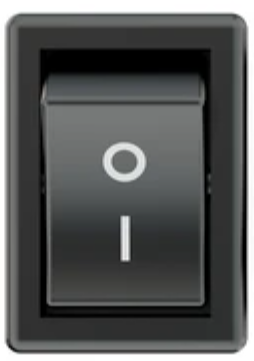
 Design with switch in Cirkit Designer
Design with switch in Cirkit DesignerIntroduction
A switch is an electrical component that can open or close a circuit, allowing or interrupting the flow of current. It is one of the most fundamental components in electronics, used to control the operation of devices by manually or automatically toggling the flow of electricity. Switches come in various types, such as toggle switches, push-button switches, slide switches, and rotary switches, each suited for specific applications.
Explore Projects Built with switch
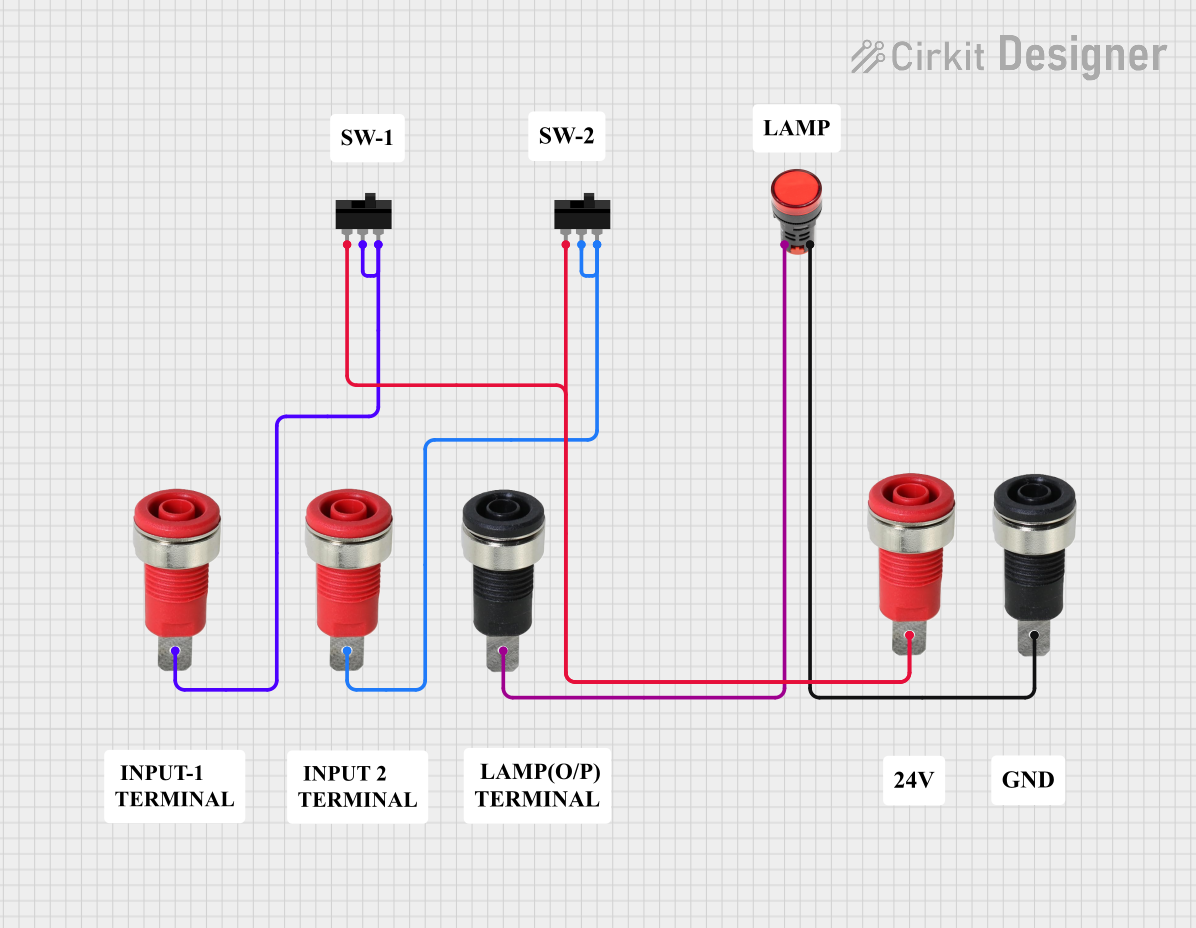
 Open Project in Cirkit Designer
Open Project in Cirkit Designer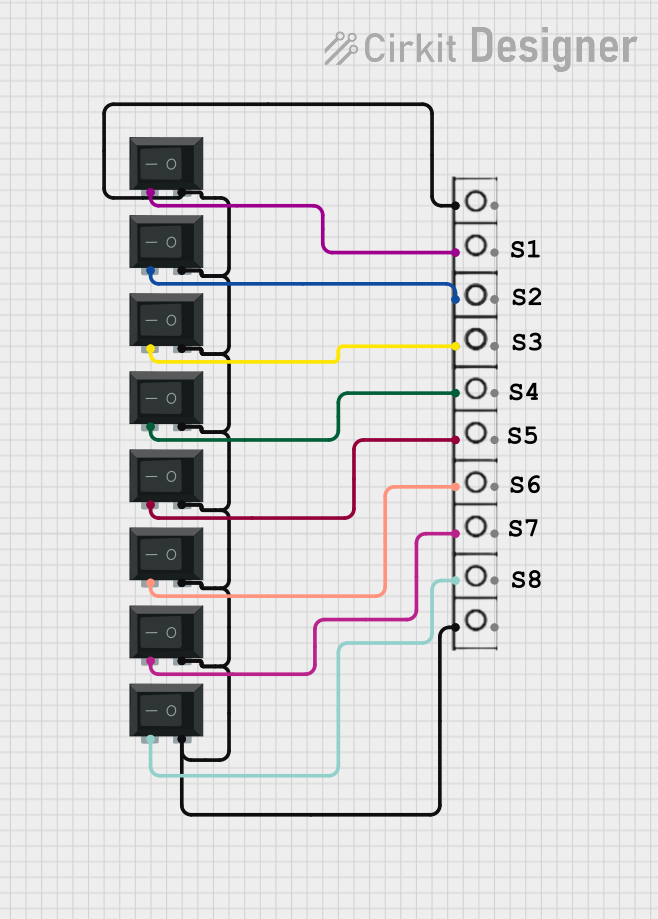
 Open Project in Cirkit Designer
Open Project in Cirkit Designer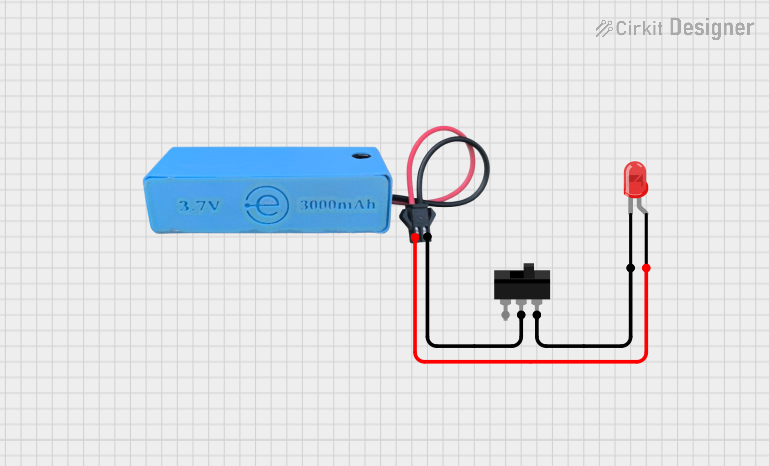
 Open Project in Cirkit Designer
Open Project in Cirkit Designer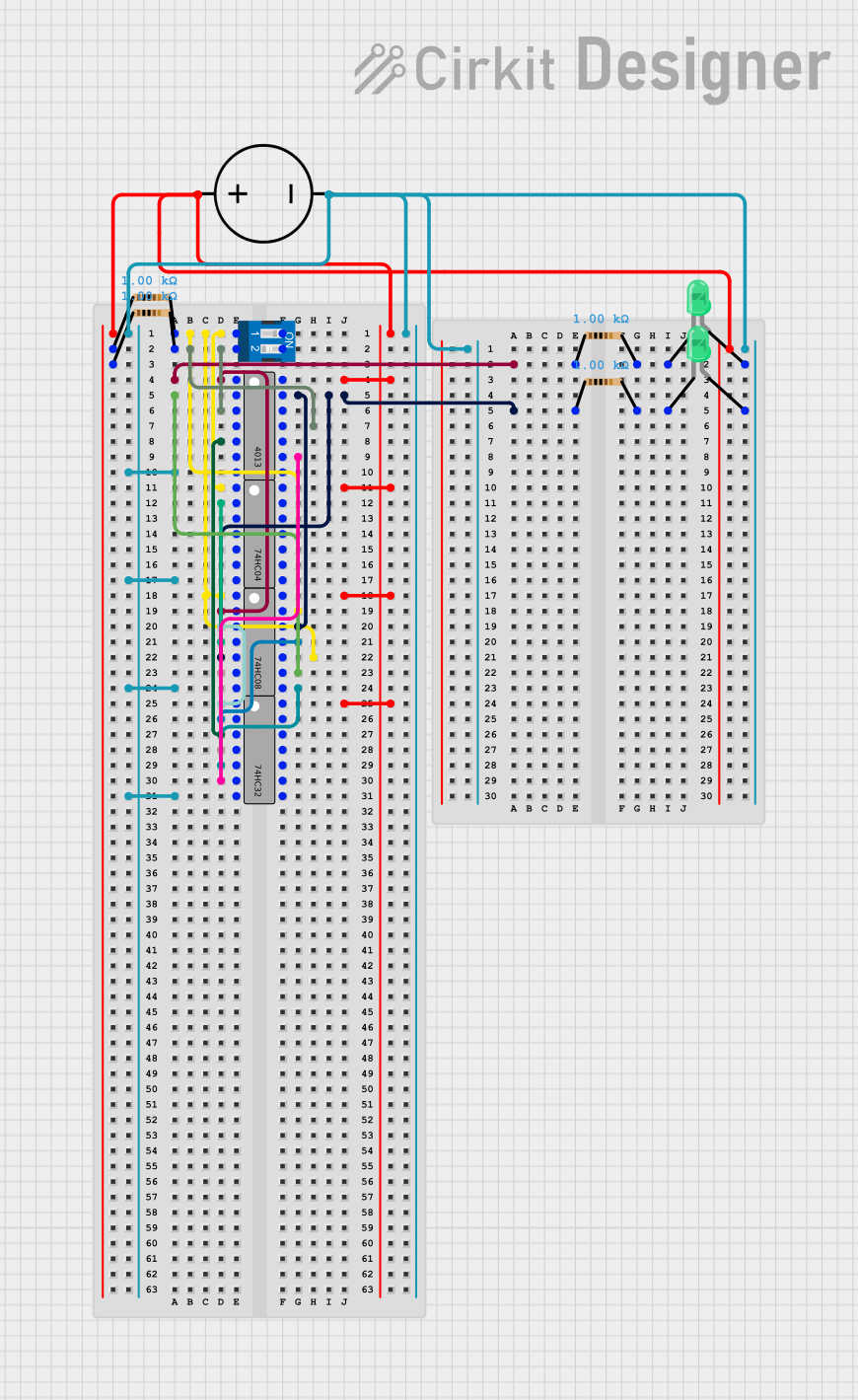
 Open Project in Cirkit Designer
Open Project in Cirkit DesignerExplore Projects Built with switch

 Open Project in Cirkit Designer
Open Project in Cirkit Designer
 Open Project in Cirkit Designer
Open Project in Cirkit Designer
 Open Project in Cirkit Designer
Open Project in Cirkit Designer
 Open Project in Cirkit Designer
Open Project in Cirkit DesignerCommon Applications and Use Cases
- Turning devices on or off (e.g., lights, fans, appliances)
- Mode selection in electronic devices
- Resetting circuits or systems
- User input in embedded systems (e.g., buttons for Arduino projects)
- Safety mechanisms to disconnect power in emergencies
Technical Specifications
Switches vary widely in their specifications depending on the type and intended application. Below are general specifications for a basic single-pole single-throw (SPST) switch:
| Parameter | Value |
|---|---|
| Voltage Rating | Typically 3V to 250V (AC or DC) |
| Current Rating | 0.1A to 15A (varies by model) |
| Contact Resistance | < 50 mΩ |
| Insulation Resistance | > 100 MΩ |
| Mechanical Life | 10,000 to 1,000,000 operations |
| Operating Temperature | -20°C to 85°C |
Pin Configuration and Descriptions
For a basic SPST switch, the pin configuration is straightforward:
| Pin Name | Description |
|---|---|
| Pin 1 | Input terminal for the circuit |
| Pin 2 | Output terminal for the circuit |
For more complex switches (e.g., SPDT, DPDT), additional pins are used for multiple connections or poles.
Usage Instructions
How to Use the Component in a Circuit
- Identify the Terminals: For a basic SPST switch, locate the two terminals (Pin 1 and Pin 2). These are typically interchangeable.
- Connect the Switch:
- Connect one terminal to the power source or signal input.
- Connect the other terminal to the load or circuit output.
- Toggle the Switch: Flip, press, or slide the switch to open or close the circuit, controlling the flow of current.
Important Considerations and Best Practices
- Voltage and Current Ratings: Ensure the switch can handle the voltage and current of your circuit. Exceeding these ratings can damage the switch or cause failure.
- Debouncing: Mechanical switches may produce noise or "bouncing" when toggled. Use a capacitor or software debouncing techniques in digital circuits to avoid erratic behavior.
- Mounting: Secure the switch properly to prevent mechanical stress or accidental toggling.
- Safety: For high-voltage or high-current applications, use switches with appropriate insulation and safety certifications.
Example: Connecting a Switch to an Arduino UNO
Below is an example of using a push-button switch with an Arduino UNO to toggle an LED:
// Define pin numbers
const int switchPin = 2; // Pin connected to the switch
const int ledPin = 13; // Pin connected to the LED
// Variable to store the switch state
int switchState = 0;
void setup() {
pinMode(switchPin, INPUT_PULLUP); // Set switch pin as input with pull-up resistor
pinMode(ledPin, OUTPUT); // Set LED pin as output
}
void loop() {
// Read the state of the switch
switchState = digitalRead(switchPin);
// If the switch is pressed (LOW state due to pull-up resistor)
if (switchState == LOW) {
digitalWrite(ledPin, HIGH); // Turn on the LED
} else {
digitalWrite(ledPin, LOW); // Turn off the LED
}
}
Notes:
- The
INPUT_PULLUPmode enables the internal pull-up resistor, simplifying the circuit. - The switch should be connected between the pin and ground.
Troubleshooting and FAQs
Common Issues Users Might Face
Switch Not Working:
- Cause: Incorrect wiring or loose connections.
- Solution: Double-check the wiring and ensure the switch terminals are properly connected.
Switch Generates Noise in Digital Circuits:
- Cause: Mechanical bouncing of the switch contacts.
- Solution: Use a capacitor for hardware debouncing or implement software debouncing in your code.
Switch Overheats or Fails:
- Cause: Exceeding the voltage or current rating.
- Solution: Verify the ratings of the switch and ensure they match your circuit requirements.
LED Does Not Respond in Arduino Example:
- Cause: Incorrect pin configuration or faulty components.
- Solution: Check the pin numbers in the code and ensure the switch and LED are functional.
FAQs
Q: Can I use a switch to control AC devices?
A: Yes, but ensure the switch is rated for the AC voltage and current. For high-power applications, use switches specifically designed for AC loads.
Q: What is the difference between SPST and SPDT switches?
A: SPST (Single Pole Single Throw) switches have one input and one output, while SPDT (Single Pole Double Throw) switches have one input and two outputs, allowing the circuit to toggle between two states.
Q: How do I debounce a switch in software?
A: Implement a delay (e.g., 10-50ms) after detecting a state change to filter out noise. Alternatively, use a state machine to track stable states.
Q: Can I use a switch with a microcontroller other than Arduino?
A: Yes, switches are compatible with any microcontroller. Follow similar wiring and logic principles for other platforms.